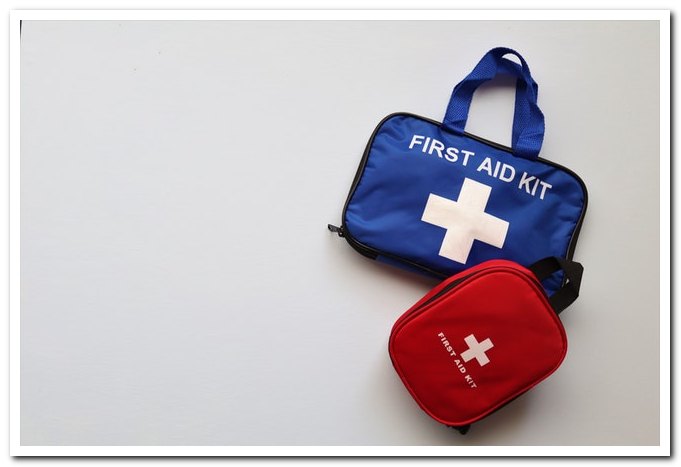-

Certified Dietary Manager (CDM)
WesleyLifeBettendorf, IABettendorf, IA- Full Time
-

Pharmacy Technician, Insitutional
SSM HealthRipon, WIRipon, WI- Full Time
-

Pharmacy Technician – Medication reconciliation
UCLA HealthLos Angeles, CALos Angeles, CA- Full Time
-

Pharmacy Technician
RWJBarnabas HealthNew Brunswick, NJNew Brunswick, NJ- Full Time
-

Pharmacy Technician
VG'SGenesee, MIGenesee, MI- Part Time
Medical Assistant Jobs

Medical assisting remains one of the quickest ways to enter the healthcare industry. Medical assistants are an essential part of any practice, and healthcare facilities like clinics and hospitals are highly dependent on their clinical and administrative assistance. Knowing this, it’s not surprising that medical assistant jobs are in high demand and have the fastest-growing employment rate in the healthcare industry.
If you’re considering medical assisting as a career option, we have put together vital information on everything you need to know about this field. You will get a chance to learn about the different types of medical assistants, education requirements, advancement, average salary, job outlook, and so much more. But first, what do medical assistants do?
About Medical Assistant Jobs
What Do Medical Assistants Do?
Medical assistants are responsible for carrying out clinical and administrative tasks in hospitals and other healthcare establishments. They work to make life easier for both physicians and patients.
Some of their clinical duties include recording vital signs and taking medical histories of patients. They also handle administrative tasks, like scheduling appointments and assisting patients in filling out insurance forms.
Medical assistants are tasked with ensuring the smooth running of busy hospitals, clinics, and other healthcare facilities. They provide immense support and aid in making the medical practice efficient.
Medical Assistant Job Duties
Medical assistants have very diverse roles that boost efficiency, making medical practice a well-organized and productive process. However, their duties may vary with specialty, location, and size of the practice. Typical medical assistant job roles that keep healthcare facilities running smoothly include:
- They aid physicians in carrying out examinations.
- Under the instruction and supervision of physicians, medical assistants can administer medications and injections.
- They examine vital signs, such as blood pressure.
- They prepare blood samples for laboratory tests.
- They discard contaminated supplies and sterilize medical equipment.
- They remove stitches, change dressings, draw blood, and prepare patients for various procedures.
- They prepare examination rooms used for treating patients.
- Those with medical assisting jobs like ophthalmic and optometric assistants help provide eye care and aid ophthalmologists in surgery.
- They answer telephones, schedule appointments, and help patients in filling out insurance forms.
- They record the history and personal information of patients.
- They input patient information into medical records.
Medical assistants are expected to respect the confidential nature of a patients’ personal information and are only allowed to share this information with other medical personnel treating the patient.
They should not be confused with physician assistants, whose job is to examine and treat patients under the direct supervision of a physician. Additionally, while medical assistants usually perform clinical and administrative work, they may specialize in only one of these tasks in larger hospitals.
Medical Assistant Job Types
Since we have established that medical assistants are one of the essential pillars of medical practice, we must note that there are different types of these jobs. Although most medical assistant job requirements are similar, different types of medical assistants perform distinct tasks. Here are some common medical assistant specializations:
Clinical Medical Assistant
Clinical medical assistants primarily work in clinics but may also be found in hospitals, nursing homes, and other healthcare facilities. They work directly with physicians and other healthcare personnel to provide care and treatment to patients.
Generally, a clinical medical assistant’s exact responsibilities depend on their qualifications, abilities, and place of employment. However, typical clinical medical assisting jobs constitute performing basic laboratory tests, preparing patients for examinations, recording their medical history, performing minor treatments, and other clinical tasks.
Administrative Medical Assistant
Administrative medical assistants play a crucial role in healthcare facilities by ensuring the business or clerical side of the practice runs smoothly. While they are not responsible for the hands-on treatment, their presence aids physicians and other medical personnel to perform their primary function of providing care and treatment.
Administrative medical assistants are responsible for administrative tasks such as filling out insurance forms, scheduling appointments, recording patients’ information, answering the telephone, managing the front desk and reception areas. They also take care of general billing and accounting, ensure that the clinic has the necessary equipment, and carry out other administrative tasks required by the physician.
Specialized Medical Assistant
Specialized medical assistants are responsible for specific clinical tasks that an average clinical medical assistant would be unable to do. This is because they have undergone specialized training that enables them to work closely with physicians and treat patients directly. The duties of a specialized medical assistant depend primarily on their area of specialization.
For example, podiatric medical assistants’ job description includes providing care for the foot by assisting a podiatrist during surgery, making castings for feet, exposing, and developing x-rays. It also depends on the size of the practice, as specialized medical assistants may perform administrative tasks in a small practice.
Medical Assistant Work Environment
Statistics on medical assistant jobs in 2019 showed that medical assistants held around 725,200 jobs in 2019. A significant amount (57%) of medical assistants worked in physicians’ offices while a smaller number of them (15%) worked in state, local and private hospitals.
An additional 8% worked in outpatient care centers, and only 4% worked in chiropractors’ offices. Medical assistants perform their duties indoors in clean, well-lit environments. The nature of medical assisting jobs requires that they continuously interact with other people and take on several tasks at once.
Injuries and Illnesses
Because the medical assistant job description includes constant interaction with patients, medical assistants are often exposed to various diseases and infections. Additionally, since they spend a significant amount of time standing and working with patients, they may suffer from ergonomic and stress-related injuries. Medical assistants are also at risk of mercury exposure and radiation exposure from x-rays.
Thus, medical assistants are required to implement all the safety measures prescribed by the facility. They must wear glasses, rubber gloves, masks, and other safety gear to protect themselves while working. Medical assistants are also expected to promptly report any health hazards to the facility’s management, so as to avoid accidents.
Work Schedules
Most medical assistant positions are full-time jobs that require a lot of commitment. They typically work 40-hour weeks, but it may be more in some cases. In healthcare facilities that are always open, some medical assistants may work in the evenings, during weekends, and even during holidays to cover shifts. While most of these positions may be full time, there are some part-time medical assistant job opportunities.
How to Become a Medical Assistant
To pursue a career as a medical assistant, you’ll need postsecondary school education. However, some medical assistants start with a high school diploma and then learn through on-the-job training.
Important Qualities
In addition to being ethical and capable of multitasking, people seeking medical assisting jobs in hospitals and other facilities must have the following qualities:
- Interpersonal skills: Medical assistant jobs require a high level of communication skills. This is because medical assistants must constantly interact with patients who may be in pain. Thus, they must have a certain level of emotional intelligence to remain calm and professional.
- Analytical skills: Possession of analytical skills is essential, as medical assistants may be tasked with coding medical records for billing. These skills can also come in handy for understanding diagnoses and medical charts.
- Technical skills: Technical skills are a must-have, as medical assistants are expected to use basic clinical instruments. These instruments and equipment are used to take vital signs like blood pressure and heart rate.
- Detail-oriented: Regardless of the type or size of the practice, all medical assistants must be able to pay strict attention to detail. This will enable them to take accurate vital signs and record patient information needed by physicians and insurance companies.
Medical Assistant Education and Training
Most states have no formal educational requirements for MA jobs in the US. However, many employers tend to choose medical assistants who have graduated from postsecondary education programs.
These programs take around 1 year to complete and are readily available in vocational and technical schools, community colleges, and universities. In some community colleges, these programs may last for 2 years, and graduates are awarded an associate’s degree, which prepares them for eventual advancement.
All programs offer courses in physiology, anatomy and medical terminology, accounting, typing, record keeping, transcription, and insurance processing. Additionally, they have lessons on laboratory techniques, pharmaceutical principles, diagnostic and clinical procedures, medication administration, first aid, and so much more.
It is important to note that some medical assistants kick off their medical assisting careers with only a high school diploma or its equivalent. They learn their roles through on-the-job training. Physicians and other medical personnel may teach these medical assistants medical terminology, the names of medical instruments, methods of interacting with patients, how to code paper and electronic health records (EHRs), how to do basic tasks, and other roles in keeping the practice running smoothly.
Depending on the facility, it may take several months for an assistant with a high school diploma to complete training. High school students hoping to walk down the medical assisting career path should take courses in anatomy, biology, chemistry, mathematics, computer science, and business studies.
Licenses, Certificates, and Registrations
In the US, medical assistants are not required to be certified in most states. However, as with the above-stated educational requirements, employers tend to hire certified medical assistants. Several organizations offer these certifications, and in most cases, applicants are required to be aged 18 and above before applying for certification.
Becoming a certified medical assistant doesn’t only require passing an exam; you must also be eligible for each certification. Eligible applicants must either be a graduate from an accredited program, have credible work experience, or other requirements demanded by each state.
In the United States, the National Commission for Certifying Agencies, a part of the Institute for Credentialing Excellence, is responsible for accrediting medical assistants’ certifications. The commission offers five certifications for medical assistants, which are:
- Certified Medical Administrative Assistant (CMAA) from the National Healthcareer Association.
- Certified Clinical Medical Assistant (CCMA) from the National Healthcareer Association.
- Certified Medical Assistant (CMA) from the American Association of Medical Assistants.
- Registered Medical Assistant (RMA) from American Medical Technologists.
- National Certified Medical Assistant (NCMA) from the National Center for Competency Testing.
In addition to these well-recognized general certifications, here are other certification options for medical assistants who work for different medical specialists:
- Certified Ophthalmic Assistant (COA): The Joint Commission on Allied Health Personnel in Ophthalmology.
- Certified Clinical Podiatric Medical Assistant (CCPMA): The American College of Podiatric Medical Assistants.
- Podiatric Medical Assistant, Certified (PMAC): American Society of Podiatric Medical Assistants.
Advancement
Medical assistants can advance into other healthcare occupations as they gain more experience. With more education, they can specialize in other roles such as physician assistant, registered nurse, or nurse practitioner.
Medical Assistant Salary
The earnings of a medical assistant are dependent on their location, experience, and skill level. According to the United States Bureau of Labor Statistics, as of May 2019, medical assistants’ average salary was $16.73 per hour. This rounds up to a median salary of $34,800 per year. The medical assistant job salary earned by the lowest 10% was below $25,820, while the highest 10% earned over $48,720.
In that year, medical assistants who worked in outpatient care centers earned the most money ($36,810). Medical assistant jobs in hospitals remain financially attractive as they had a median annual wage of $36,080. Medical assistants in physicians’ offices earned $34,870, while those in chiropractors’ offices had the lowest median annual wage of $30,870.
Medical Assistant Job Outlook
According to reports from the US Bureau of Labor Statistics, the employment rate for medical assistants in the country is expected to increase faster than the rates for all other healthcare occupations. The employment rate of medical assistants in the country is expected to grow by 19% between 2019 and 2029.
This significant growth is driven by the rise in the aging baby-boom population, which is increasing the demand for the preventive medical services offered by physicians. Thus, to keep their practice running smoothly, these physicians will employ more medical assistants to carry out clinical and administrative tasks, giving them time to care for patients.
Additionally, the rising number of clinics, group practices, and other healthcare facilities will increase medical assisting job openings to keep these facilities running smoothly and efficiently.
Job Prospects
Because medical assistants are a crucial part of medical practice, they are expected to have good job prospects and enjoy several medical assisting job opportunities.These jobs are in high-demand as reports show that medical assistant employment is expected to rise from 725,200 in 2019 to 864,400 in 2029.
However, as stated earlier, certified medical assistants and those familiar with electronic health records (EHRs) are bound to have better job prospects.
FAQ
How much does a medical assistant make?
The United States Bureau of Labor Statistics reported that as of May 2019, medical assistants in the country earned a median salary of $34,800 per year. Medical assistant jobs salary adds up to about $16.73 per hour, with the lowest 10% earning below $25,820 each year.
However, the highest 10% earned a median salary of $48,720 per year. Additionally, in the same period, medical assistants working in outpatient care centers earned the most money ($36,810), while assistants in chiropractors’ offices earned the lowest median annual wage of $30,870.
Is a medical assistant a good career choice?
The medical assistant career has several advantages that make it the perfect vocation choice. First of all, medical assistants require short-term training making it easy to kick-start your career. Some training could be as short as 10 months, and others could be as long as 2 years.
Secondly, the medical assisting career outlook shows high demand for medical assistants in the US. Employment rates for medical assistants are projected to grow by 19% between 2019 and 2029.
Thirdly, the pay trends high as the median annual salary for these assistants is $34,800 per year, with some earning as high as $48,720 per year. Additionally, it is a fulfilling career that provides opportunities to pursue other career paths such as medical coding or nursing.
What jobs can you get as a medical assistant?
There are several medical assisting career opportunities, and this is especially true for certified medical assistants. There are jobs for medical assistants in the hospital and clinic settings, nursing homes, outpatient care facilities, and many other healthcare establishments.
In these facilities, medical assistants may work as clinical, administrative, or specialized medical assistants. They can also work as medical office assistants, phlebotomy technicians, medical claims examiners, EKG technicians, surgical technicians, health unit clerks, public health inspectors, etc.
How many jobs are available for a medical assistant?
As of May 2019, there were 725,200 job vacancies for medical assistants in the United States. The medical assistant employment rate is growing faster than other healthcare occupations in the country.
The Bureau of Labor Statistics predicts that medical assistants employment will grow by 19% between 2019 and 2029. In other words, the number of medical assistant jobs available is expected to rise from 725,200 in 2019 to 864,400 in 2029.
How many hours do medical assistants work?
Most jobs for medical assistants are full-time jobs that require commitment. Generally, medical assistants work 8 am to 5 pm, adding up to 40-hour per week. However, in hospitals and other healthcare facilities that are always open, medical assistants may be required to work in the evenings, weekends, and holidays. However, some medical assistants work part-time, taking up shorter shifts.
Do hospitals hire medical assistants?
Medical assistants are the pillars of most healthcare facilities. They carry out essential duties that ensure that a practice runs smoothly and efficiently. Thus, hospitals cannot do without medical assistants. There is at least one medical assistant in every department of a hospital.
Additionally, as of May 2019, medical assistants in hospitals were the second-highest paying MAs in the country, with a median annual wage of $36,080. These medical assistants regularly interact with patients and successfully bridge the gap between physicians and patients.
What is the demand for medical assistants?
There is a high demand for medical assistants in the United States. Data from the Bureau of Labor Statistics show that medical assistants have the highest employment growth rate for any healthcare occupation.
Reports show that employment rates for medical assistants will grow by 19% between 2019 and 2020. This demand is driven by the rise in the aging baby-boom population, which will increase the demand for preventive medical services offered by physicians. Thus, physicians will have to employ more medical assistants to focus more on providing care and treatment.
How do you get a job as a medical assistant?
To get a job as a medical assistant, there are some medical assistant requirements you have to meet. First, you must have a minimum of a high school diploma or its equivalent. If you’re hired with just a high school diploma, you can get on-the-job training and learn about medical assisting.
However, most employers tend to hire medical assistants who have graduated from postsecondary education programs. Additionally, becoming a certified medical assistant increases your chances of getting hired. Apart from the educational requirements, you must be detail-oriented and possess interpersonal, analytical, and technical skills. Having volunteer experience may also increase your chances of getting hired.
Conclusion
Medical assistant jobs are highly tasking and, in some cases, constitute a blend of clinical and administrative roles. However, this is a highly fulfilling career, which provides an opportunity to pursue work in other healthcare occupations like nursing, physician, physician assistant, etc.